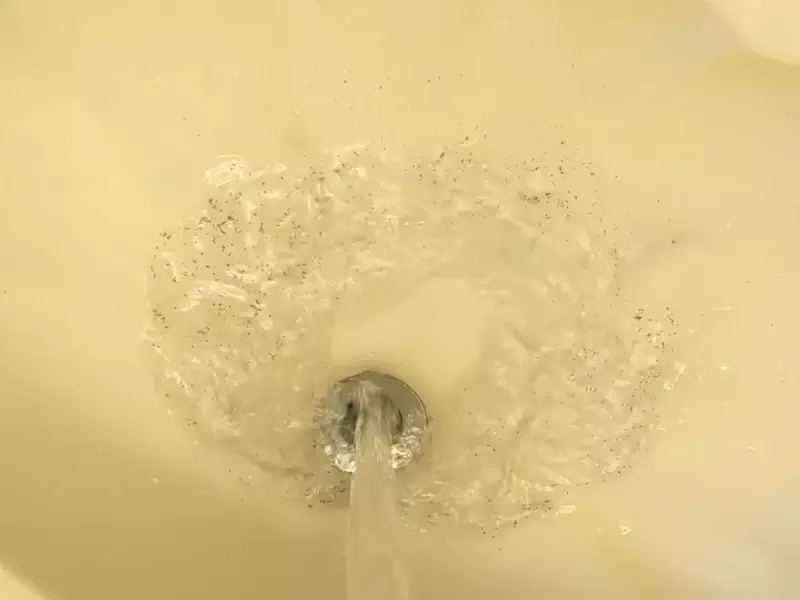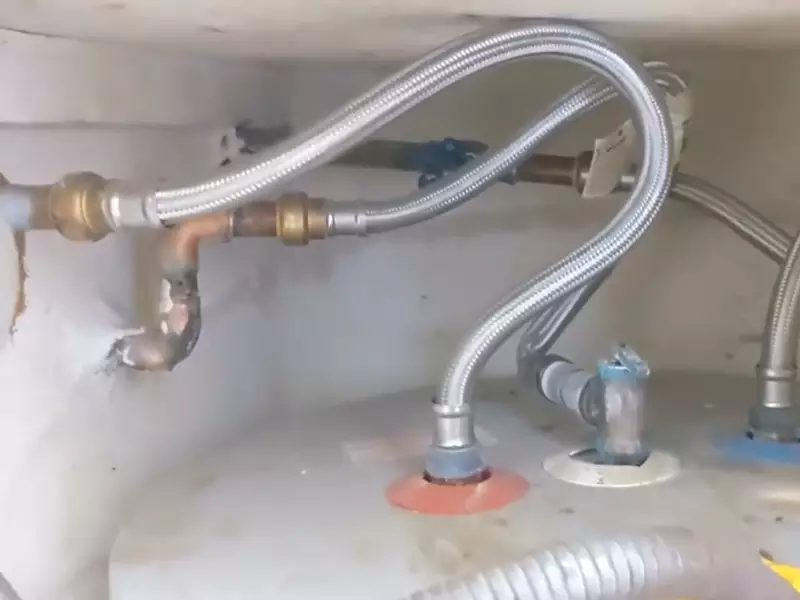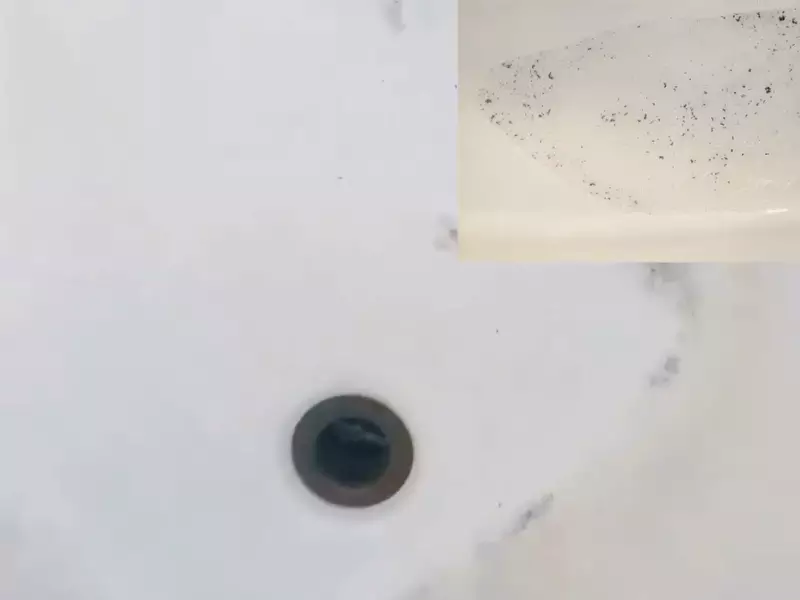Well water, a primary source of clean drinking water for many, isn’t always free from quality issues. Over the years, various challenges have emerged, with black sediment being a particularly prevalent concern.
Black sediment, often an accumulation of minerals, sand, and other particles, can significantly degrade the quality of well water. It can also have potential implications for health if not appropriately addressed.
For anyone who relies on well water, recognizing the significance of this sediment is vital. It’s not just about the aesthetics of clear water but ensuring the health and longevity of both the well system and its users.
Black Sediment Basics
What is Black Sediment?
Black sediment in well water usually consists of small particles like minerals, sand, and other debris. These minute particles can often give the water a murky appearance and may even lead to taste and odor issues.

Why it’s a Concern?
The presence of black sediment can adversely impact water quality, making it less pleasant for consumption. Over extended periods, the sediment may cause blockages in plumbing systems or even damage water-based appliances. More critically, some sediments might contain harmful substances, posing health concerns to those consuming the water.
Primary Causes of Black Sediment
Maintaining the clarity and purity of well water is vital for both consumption and appliance use. Over my 15 years in well mechanics, I’ve identified various root causes of black sediment. Let’s delve deeper into these primary causes:
Manganese and Iron Deposits
Manganese and iron are naturally found in the earth’s crust. As water moves through soil and rock formations, it can dissolve these minerals, carrying them into the well:
- Natural Occurrence: Groundwater often comes into contact with rock formations rich in iron and manganese. Over time, these minerals leach into the water, leading to increased concentrations.
- Environmental Factors: Seasonal changes or disturbances like construction near water sources can stir up sediment and increase mineral content in the water.
- Health Implications: While moderate levels of manganese and iron aren’t harmful for consumption, excessive amounts can give water a metallic taste and even stain laundry and fixtures.
Decaying Equipment
The structural components of a well are susceptible to wear and tear. As these components deteriorate, they can contribute to the sediment problem:
- Corrosion: Metals used in well constructions, such as steel or iron, can corrode over time, especially in acidic water conditions. This corrosion releases dark particles into the water.
- Rubber Seals and Gaskets: These essential components can degrade over time, especially if exposed to harsh environmental conditions or chemicals. Bits of eroded rubber can then appear as black particles in the water.
- Pipe Erosion: Constant water flow can slowly erode the inner lining of pipes. This can introduce not only metallic particles but also other materials into the water, depending on the pipe’s composition.
Infrequent Use of Well
Letting a well sit idle can inadvertently lead to sediment problems:
- Water Stagnation: Still water can allow for the settling of heavier particles, including manganese and iron deposits. When the well is finally used, the settled sediment gets drawn up, causing a sudden spike in black particles in the water.
- Bacterial Growth: Infrequent use can also foster the growth of certain bacteria. Some bacteria are known to interact with minerals, especially iron, causing darkening of the water.

Identifying the Source
It’s not just about noticing the problem but pinpointing its origin:
Water Tests
Identifying the exact nature and concentration of the sediments is the first step toward resolution:
- Lab Analysis: Send water samples to a reputable lab. They can provide a detailed breakdown of all constituents, helping pinpoint excessive minerals or contaminants.
- Home Test Kits: For those looking for quicker, albeit less comprehensive results, home test kits can be useful. These kits can give a general idea about the presence of iron, manganese, or other common well water constituents.
Inspecting Well Components
Hands-on inspection can reveal a lot about the state of the well and its infrastructure:
- Visual Inspection: Look for signs of rust, corrosion, or damage on exposed well components. This can often be the first clue towards identifying deteriorating parts.
- Pressure Checks: A sudden drop in pressure could indicate blockages due to sediment buildup. It might also suggest issues with the well pump or other components.
- Professional Assessment: Sometimes, the issues lie deep within the well or are not immediately visible. In such cases, calling in a professional for a thorough assessment can be invaluable.
Effective Fixes
Clear water isn’t just about aesthetics. It’s about safety, health, and the longevity of appliances and plumbing. Here are ways to address black sediment:
Filter Systems
Installing filtration systems can significantly improve water clarity:
- Whole House Filtration: These systems are designed to treat all the water entering a residence. They effectively trap sediments and contaminants, ensuring only clear water reaches the taps.
- Activated Carbon Filters: Renowned for their ability to remove contaminants and improve taste and odor, these filters are especially effective against organic compounds. When combined with sediment filters, they offer comprehensive protection against black sediments.
- Ion Exchange Systems: These are specialized filters designed to remove specific ions, like iron and manganese, from water. They replace these unwanted ions with more benign ones, like sodium, improving water quality.

Regular Well Maintenance
A well-maintained system ensures longevity and consistent water quality:
- Flushing: Periodically flushing the well can help clear out sediments that have settled at the bottom. This process involves pumping out large volumes of water quickly, carrying away sediments with it.
- Checking and Cleaning Screens: The well screen prevents larger sediments and debris from entering the well. Over time, this screen can get clogged. Regular checks and cleanings can ensure it functions optimally.
- Professional Servicing: At least once a year, consider having a professional service the well. This comprehensive maintenance can identify potential issues before they become significant problems.
Replacement and Upgrades
Sometimes, addressing the root of the problem requires more drastic measures:
- Updating Components: Modern well components are often more resistant to wear, corrosion, and degradation. Upgrading to these can help reduce sediment issues.
- System Overhaul: If sediment problems persist despite all efforts, it might be time to consider a complete well system overhaul. With modern drilling techniques and better materials, newer wells often face fewer sediment issues.
Preventive Measures
Prevention is always better than cure. Adopting certain practices can help prevent or reduce sediment issues:
Routine Water Testing
- Frequency: Depending on the well’s location and past water quality, testing frequency can vary. However, as a general rule, annual testing is advisable.
- Documenting Changes: Keep records of all test results. Noting changes over time can help identify patterns or emerging issues, allowing for timely intervention.
Optimized Water Usage
- Scheduled Usage: If possible, use the well at regular intervals. This prevents long periods of stagnation and the associated sediment buildup.
- Sealing: Ensure the well is sealed properly when not in use. This prevents external contaminants from entering the well and contributing to sediment issues.
Educate Residents
Awareness can be a potent tool:
- Workshops: Consider organizing or attending workshops on well maintenance and water quality. This can be invaluable for communities reliant on well water.
- Staying Updated: Technologies and practices evolve. Staying updated on the latest in well maintenance and water treatment can help preempt many sediment-related issues.
Frequently Asked Questions
Why is my well water suddenly cloudy?
Cloudy water can be a result of increased sediment, air bubbles, or other impurities. Regular testing can ascertain the exact cause.
How often should I inspect my well components?
Based on my experience, annual inspections are a good rule of thumb. However, if you notice changes in water quality, you might want to check sooner.
Can black sediment make me sick?
While not all black sediment is harmful, some might contain contaminants that are detrimental to health. It’s always advisable to test and treat the water if any change in quality is noticed.
Conclusion
The quality of well water is of paramount importance. With black sediment posing both aesthetic and potential health concerns, addressing it is imperative.
Through regular inspections, maintenance, and potential upgrades, one can ensure that well water remains clear and safe for consumption.
Remember, while the natural occurrence of minerals and sediment is inevitable, proactive measures can help in maintaining the purity and clarity of the well water we rely upon daily.